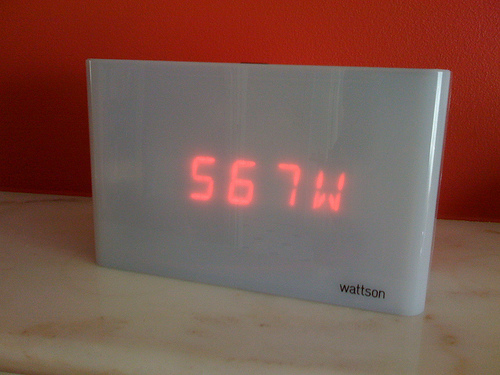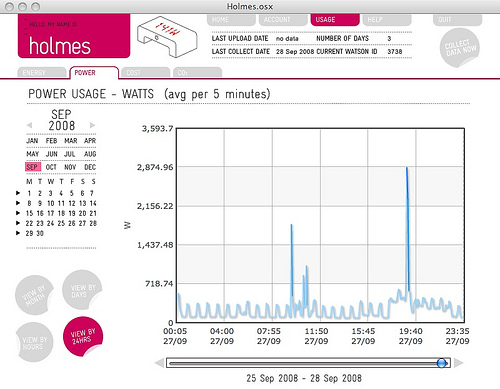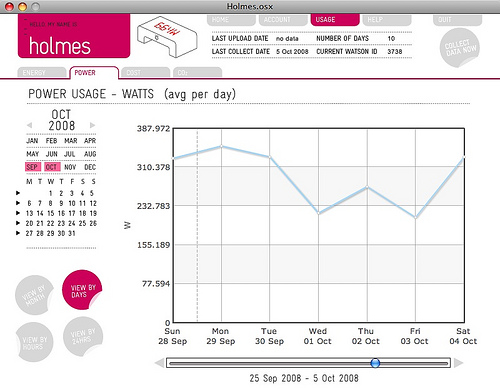
As I write this, there’s a cup of tea to the right of my keyboard. I have a reasonable idea of how much energy it took to make the tea. When I turned the kettle on, the display on Wattson scrolled up from a resting rate for the house of around 98W to over 2000W. To see those numbers first-hand, and control the numbers with a flip of a switch, is a small awakening. I suspect it’s common practice when anyone buys an energy measuring device to run around the house turning things on to see what the effect is; and then turn off as much as possible to find the smallest reading possible.
Back to the tea. These days, having had Wattson for a few months, I put a little more care into getting something like the right amount of water in the kettle. But I wonder: now that the novelty of Wattson has worn off, will my behaviour change for the long term? I’d like to know and keep it in check, and Wattson should help.
There’s a USB slot on Wattson, and DIY Kyoto supply software, called Holmes, to read the data from the device to show you your usage. The software tries to be funky, but it actually feels like a throwback to me… but it works. OK, well, ours didn’t at first, but DIYKyoto were brilliant and fixed the box for us, and we can now pull data from it.


Smashing, eh?
Well…there’s a problem with all of this. The data—or “my data” as I like to think of it—is locked up in an encrypted proprietary database. I’d love to be able to tell you Wattson is a great device, but the trouble that’s been gone through to make the data (“my data”) hard to get at niggles me. Sure, if you work at it (about 60-90 minutes) you can decrypt the data, but that’s not really playing the game. And it’s probably against the license agreement, although I can’t find it at the moment to check. There’s talk at the DIY Kyoto web site of adding an export function before the end of the 2008 (or February 2008, depending on which message you read).
Anyway: I’ll keep an eye on the graphs, and see what happens, but the data needs to be open, even if it’s via an API. In fact, DIY Kyoto have hinted at online access, and that’d be a good step. Ideally, there needs to be a direct link from Wattson to the web for a little bit of competitive energy comparison fun. Maybe one day.
Related…
- Energy Monitor Comparison Chart, from electricity-monitor.com
- Government ditches plan for free home energy monitors, The Observer, 27 Apr 2008.
- Consumer test – home energy monitors, The Telegraph, 8 Feb 2008.